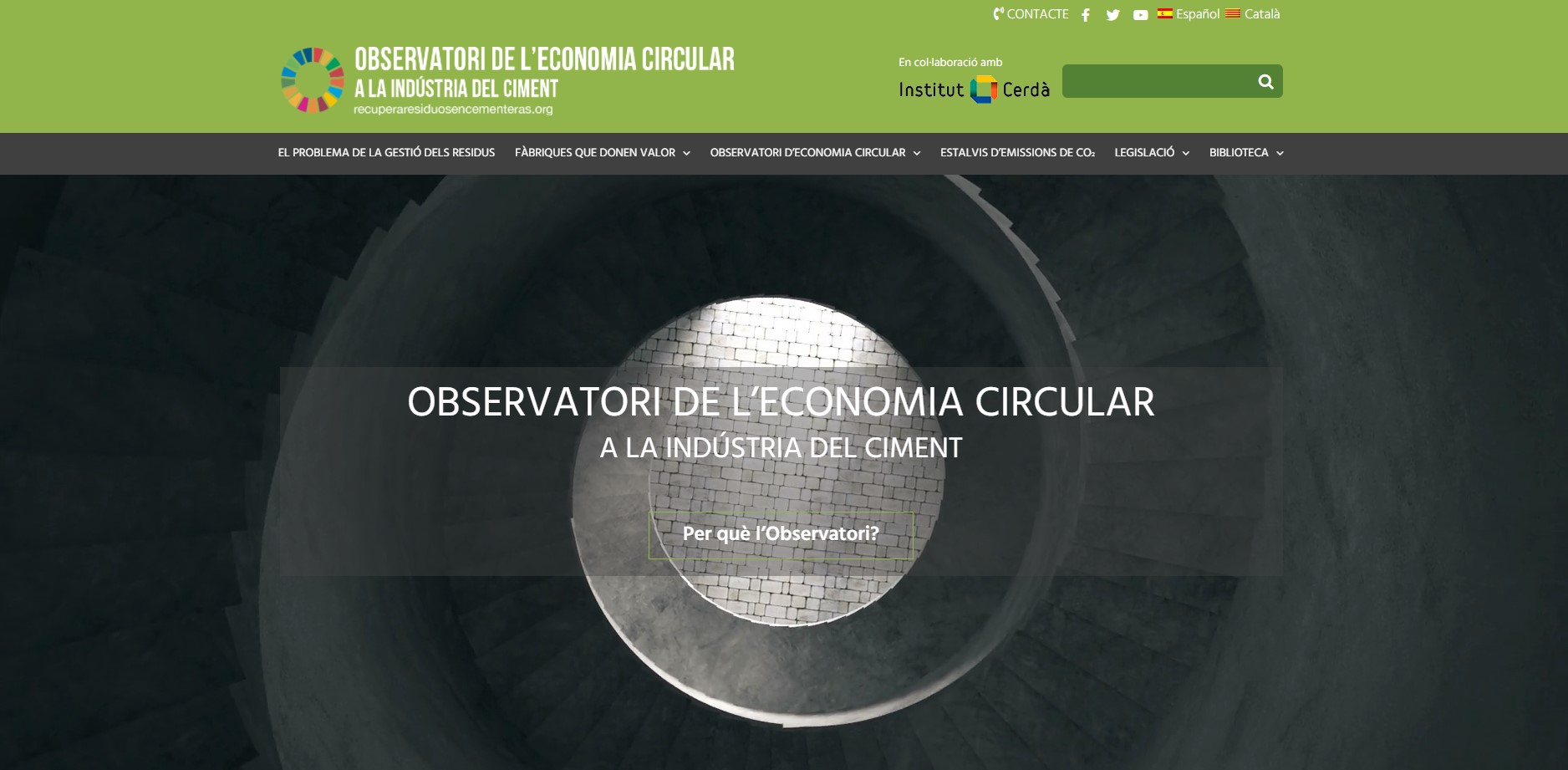The Cement and Environment Labor Foundation (Fundación CEMA) has edited and published the Catalan version of the website Observatori de l’Economia Circular a la Indústria del Ciment, which includes, with respect to the original, specific data on the cement sector in Catalonia. The Observatori de l’Economia Circular contains data on the material and energy recovery of waste in the Spanish cement industry and, in particular, the Catalan one, the savings in CO2 emissions produced thanks to the use of alternative fuels and the legislation applicable to cement factories. Ciment Català has collaborated in the edition of this internet portal with the revision of the texts in Catalan and the corresponding adaptation to this language of the sectoral technical terminology.
Among the most significant information collected in the Observatori de l’Economia Circular stands out that between 2004 and 2019 the cement factories of Catalonia have materially recovered 5.6 million tons of alternative raw materials. In 2019, the last year with official data, this figure amounted to 161,940 tons of waste.
In addition, the Catalan cement sector has energetically recovered 9.7 million tons of waste between 2004 and 2019. In 2019, 251,185 tons of waste were used, which represents a percentage of energy substitution of alternative fuels for fossil fuels of 33.7%, two points above the Spanish average. The CO2 emissions avoided with this environmental practice, which is widely spread among the most developed countries of the European Union, were 337,840 tons of CO2. This amount is equivalent to the circulation of some 227,063 cars per year, which would be the annual emissions of passenger cars in the cities of Terrassa, Mollet de Vallès and Sabadell or, alternatively, the amount of CO2 emitted by 949 roundtrip flights from Barcelona in New York.
The objective of the Observatori de l’Economia Circular is to guarantee the transparency of the sector and show its contribution to the circular economy. The website allows you to consult the desired information on historical data (from 2004 to 2019), applying different filters (year, autonomous community, type of fuel, raw materials, etc).

